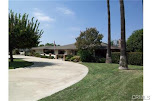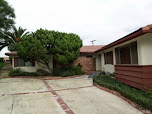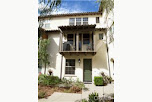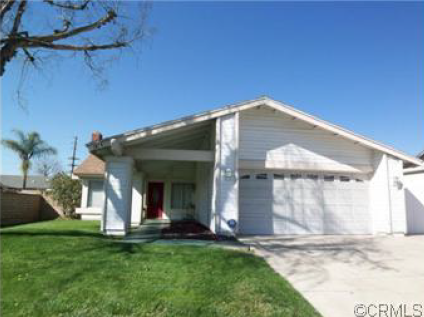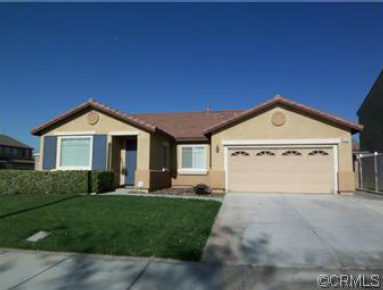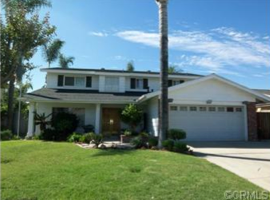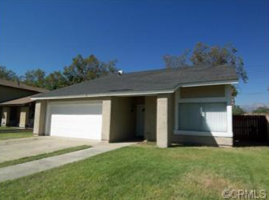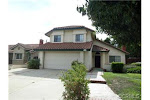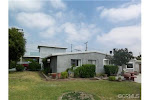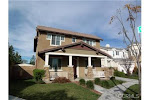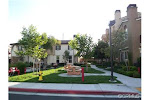Friday, July 17, 2015
HOME SALES PRICES AND VOLUME UP ACROSS THE U.S., POINTS TO CONTINUING RECOVERY
The latest figures are in, through the month of
May, and it all continues in a positive direction, as housing continues its
recovery mode, and to be a bright spot in the U.S. economy. At what point interest rates will be
raised, and what impact that will cause, because it will have consequences,
remains to be seen. The Fed has indicated later this year, although the recent
job report and unemployment stats did disappoint in the area of wages, and the
amount of people leaving the job search market. That aside, the jobs that have been added and the wages that
were predicted to increase last year and this, apparently have brought about
the desired effect. Overall, the
U.S. gained in total sales volume from May of 2014, (all following figures
based on the same time period for 2014), to rise 9.2% for May of 2015. The Midwest led the charge with 12.4%,
the Northeast was next with 11.3%, the West was next at 9% and the South
straggled a bit behind at 6%.
Prices were up overall in the U.S. 7.9%. This time, predictably, the West led at a rise of 10.2%, the
Midwest with 9.4%, the South at 8.2% and the Northeast struggling at 4.8%. (How much due to an abnormally long
winter of snow and ice?) Finally,
the sales volume by price range probably addresses the health of income wage
earners for the foreseeable future.
Since loans applicants are being properly vetted and there is no real stated
income product out there, these purchase price quadrants warrant some belief
that we have had a true recovery not just in real estate but in jobs, since
real estate ultimately reflects job stability. For the U.S. the increases in volume by price range are as
follows (numbers are per $1,000): 1) 100-250=3.6% 2) 250-500=17.4%
3) 500-750=14.5% 4) 750-1
million=12.5% 5) 1 Million +
=8%. It is debatable whether we
will continue to see a run up in both prices and volume as Americans anticipate
the rise in interest rates.
Although the Fed has made it clear that any such rises will be gradual
so as not to disrupt the economic revival. Some economists feel the price increase has already been
factored in as 30 year rates already rose the first week of July to their
highest for the year, in the low 4 percentile range. One thing is for sure, and that is that home ownership is
alive and well, and as this column predicted months ago, the Millennium Generation will continue to be a large
part of the engine that drives it.
Labels:
Chino Real Estate,
Jeanette Young,
Sherry Young
INVESTORS AND CASH BUYERS BACK AWAY FROM U.S. HOUSING
Realty-Trac, a research firm that tracks national and regional data, has
reported that fewer than 25% of single-family home and condominium purchases
were all-cash for May, national figures,
the lowest level since November 2009, and down from a peak of 42% of
purchases in February 2011. These figures drive home the point that the housing
market is standing on its own, with traditional buyers, as investors back away
from the "flip" market, of buying, rehabbing and quickly reselling
properties for a profit. This does
not mean that there are not some "buy and hold" investors still
trolling the market, but for now, the predominant purchaser appears to be the
owner occupant, or single investors exchanging and building their investment
portfolio.
Labels:
Chino Real Estate,
Jeanette Young,
Sherry Young
LOAN SURVEY SHOWS MANY BORROWERS STILL UNSURE OF QUALIFYING
A recent study by analyst firm IPSOS revealed that
borrowers still have 2 strong misnomers in the area of loan qualification; how
large a down payment in necessary, and what your FICO scores must be to
qualify. Happily, this column is
happy to spread the truth. More
than 36% surveyed still believed a 20% down payment was necessary. Nothing could be further from the
truth. Many people qualify at 10%,
but in fact, March of this year saw 29% of all loan qualifications with a 3%
down payment (FHA products mainly).
The survey on FICO scores revealed that 45% believed you must have a
score over 780. The truth about
FICO scores, which can be a little like a black hole, is that FHA requires 688
and conventional, generally speaking, comes in at 757. It always saves you time and headache
to speak to a lender before you look for a home, ensuring that you are looking
in your correct price range.
Another interesting note is that interest-only mortgages are making a
slight comeback. United Wholesale Mortgage plans, according to an article in
the OC Register, "to expand
access to the mortgages to borrowers beyond the wealthiest Americans who use
so-called jumbo loans.
Interest-only mortgages carry higher risks because they can leave
homeowners facing a jump in their bills down the road." Additionally, these loans can leave
homeowners upside down when there is an unexpected downshift in the market as
witnessed by the Great Recession.
But the lender promises to properly vet the qualifiers for this type of
mortgage. It does have its
attractions for homeowners who have liquidity in other areas of their
finances. On a $300,000 loan, the
monthly output is $1,31 versus $1,326.
However, note that these loans can climb as much as 2% annually and 5%
total--causing payments to jump to $1,838 after 10 years. Clearly this is a product that may have
use for a well qualified borrower who KNOWS they will be exiting the property
in less than 3 years, for example, and who feels the market appreciation will
be positive during that timeframe.
Labels:
Chino Real Estate,
Jeanette Young,
Sherry Young
Tuesday, April 7, 2015
INVENTORY TIGHTENS--BUT THE MARKET AVOIDS A RUN UP IN PRICES,SO FAR
Before you get too excited by this headline, let's
face the fact that prices are very robust. As previously reported in every local paper, the Wall Street
Journal and the news, housing prices, particularly in California have rebounded
about 75% of the lowest recessionary crash prices. Despite an early article in the LA Times on March 18th, touting a 9% increase in inventory in
LA county, with multiple factors drawing in the home sellers, such as equity
position, stable employment or gaining incomes, and the desire and hope of
moving up themselves, that inventory has vanished almost as quickly as it was
reported. In fact, the National
Housing Trend Report shows inventory has actually decreased 10.9% year over
year (February the most recent month available). What happened?
Buyers who have sat on the sideline for years, finally feeling good
about exactly the same scenarios, have swept into the market and started buying
up the inventory as quickly as it can come onto the market. Why no run up in prices? Yes we are seeing a 4% to 6% increase
year over year for February, the market is tight after all. In fact, February
pending sales surged beyond expectations.
But a 15% or 20% run
up in prices? Not this year. The cash investors are largely gone,
flippers are the minority, and buyers are savvy. They will not over pay. Therefore, the only houses that are sitting, are the ones
perceived to be overpriced.
Challenge the market and you are likely to sit...and sit. Price it correctly and the house will
be gone in a week. Who are these
buyers? Perhaps you missed the
article from the National Association of Realtors that announced that
Millennials have shifted their focus from careers, paying down student loan
debt, easing off from living with Mom and Dad, where they have been saving
money, and heading towards their own home ownership. And the ones not living with Mom and Dad? Since the Millennials have been
dramatically shaped by the Great Recession, frugality is in their second
nature. Rents have risen in often
cases, higher than what it would cost to buy. Not willing to succumb to overpaying for any one item in
their life, they are looking toward real estate. Remember that this newsletter predicted, based on a Gallup
Poll, that Millennials would become the driving force in real estate before the
end of this decade, because over 64% believe in home ownership and also believe
that a home is a better investment than stocks. The best news for the single-family resale property? The Orange County Business Council, the
leading council for OC, reports that OC homebuilding isn't keeping up with the
expanding workforce. According to
an article in the OC Register, it's creating a shortfall of "50,000 to
62,000 homes." Homeowners are
poised to maintain an edge as supply and demand economics drives housing.
Labels:
Chino Real Estate,
Jeanette Young,
Sherry Young
WHAT ARE THE ACTUAL NUMBERS
Homes listed as of March 26th -- 5,429 -- That is
down from 5,560 just two weeks earlier.
When you consider that the 1 Million-plus market equals 33.4% of all
listings, the inventory on a median priced home is even tighter. Notices of Default were at 385 for
February, up 12.2% from January's 343, but significantly lower than the
recession and the 3 years post recession.
There were only 93 actual foreclosures for the month of February in all
of Orange County, signifying a very healthy housing market. The total number of sales for March,
the latest complete month available, was 2,074. Single-family was 1,305 of that total, condos came in at 553
and new homes comprised 216 to complete the total. The median price for all homes was $590,750 which was up
4.2% for the same month the year before.
The resale median was $640,000, which was up 3.1% for March, compared to
March 2014. Condos came in at
$407,000 and that was a 5.8% increase.
New homes, always the highest, followed suit at $909,000, which was a
16.4% increase over the same period of 2014. (Source: Dataquick)
Labels:
Chino Real Estate,
Jeanette Young,
Sherry Young
COULD THINGS BE LOOKING UP FOR ORANGE COUNTY ECONOMY?
It would seem that there are some good reasons for
cautious optimism in the OC. A
survey was published by the California Economic Forecast, a Santa Barbara based
consulting firm. It published in
conjunction with the UCLA Anderson School of Management. It stated that driving the local
economy will be tourism, apartment construction and housing, and that we can
expect a resurgence in wages and salary growth. Orange County, according to the report, is leading Southern
California. Salaries are expected
to rise 2.8% for 2015 and 4.1% in 2016, the most healthy advances in over a decade. Those Millennials will also be key, as
they avoid frivolity and buy the items that creates jobs; houses, cars,
appliances, technology, and travel.
Life enhancement purchases are what they are all about...not
"stuff."
Labels:
Chino Real Estate,
Jeanette Young,
Sherry Young
A REMINDER FOR THE HOME SELLER
It's easy to drink the Kool Aid, and think that
your house can be sold for whatever you want it to be...in other words, testing
the market beyond its capabilities.
This can be a very good way for the exact opposite to happen and
actually get less for your home and have it take a lot longer to do so. This market does favor the seller. But it favors the "fair"
seller. John Knight, recipient of
the University Distinguished Faculty Award from the Eberhardt School of
Business, actually did research on the cost of both time and money to a seller
who priced high at the beginning of their listing period and then lowered their
price. Knight states, "Homes
that underwent a price revision sold for less, and the greater the revision,
the lower the selling price. Also,
the longer the home remains on the market, the lower its ultimate selling
price." There are various
reasons for this phenomena.
Firstly, buyers doubt the motivation of the seller; thinking they don't
really wish to sell, they lowball.
Or, they think there is something "wrong" with the property,
because it's been on the market so long and they lowball. Finally, they may recognize that the
seller has built in "negotiation room" into their price and so the
buyers give them more than what they bargained for, which is a lowball
offer. And since the property was
overpriced, there probably are not competing offers, which would force the
buyer to make a better offer. That
only happens when a property is priced correctly, drawing many buyers to
it.
Labels:
Chino Real Estate,
Jeanette Young,
Sherry Young
Subscribe to:
Posts (Atom)


